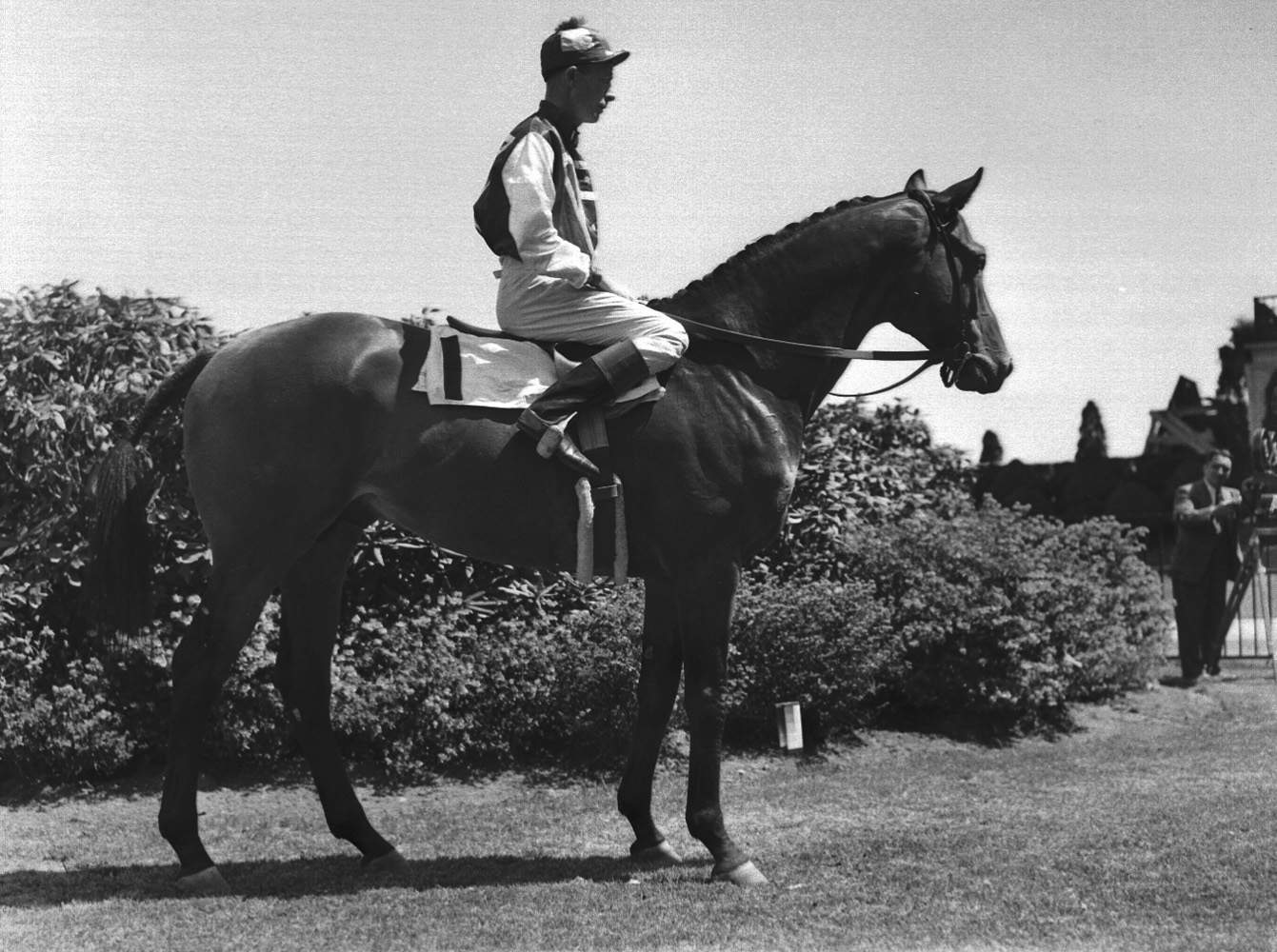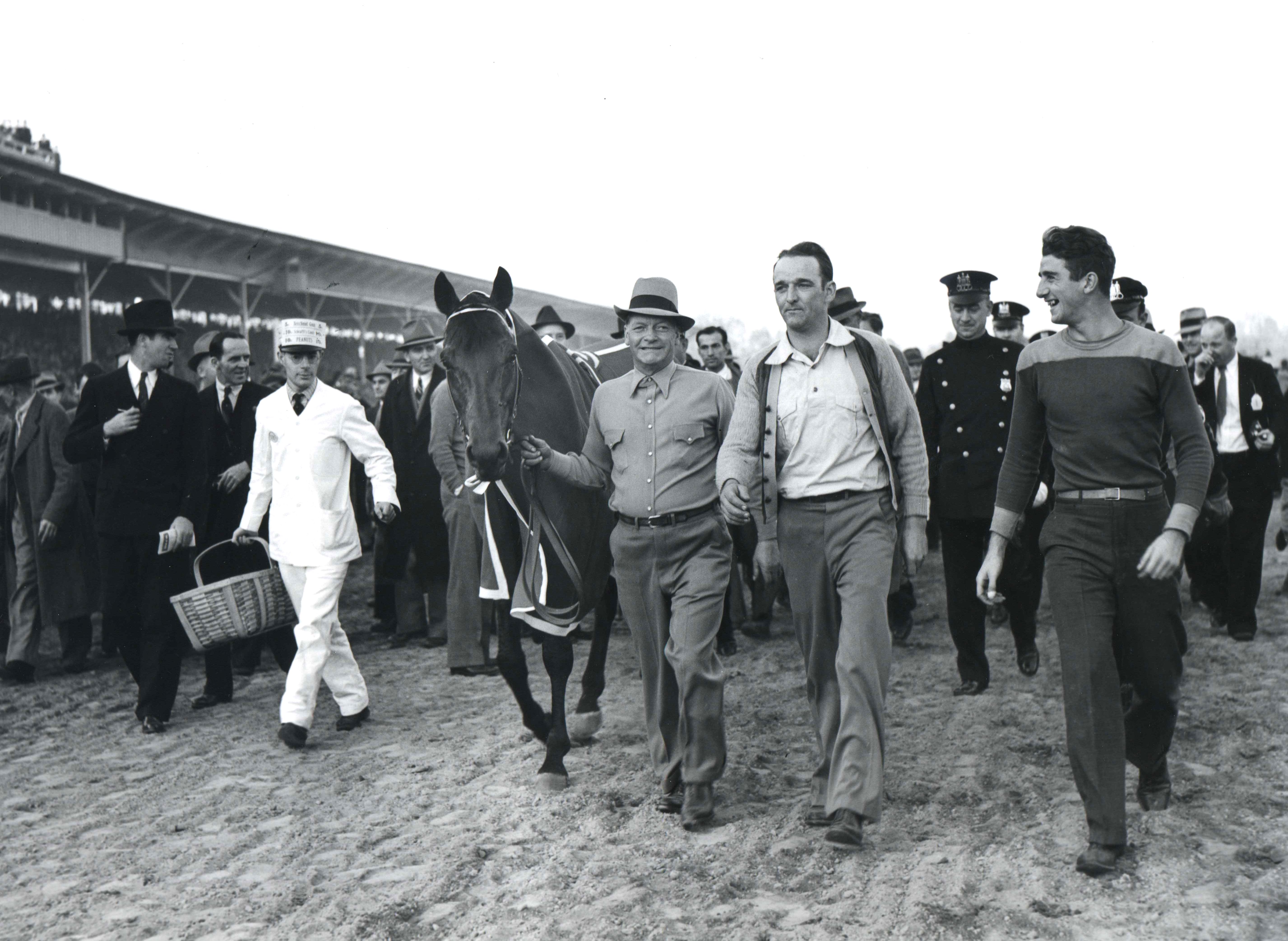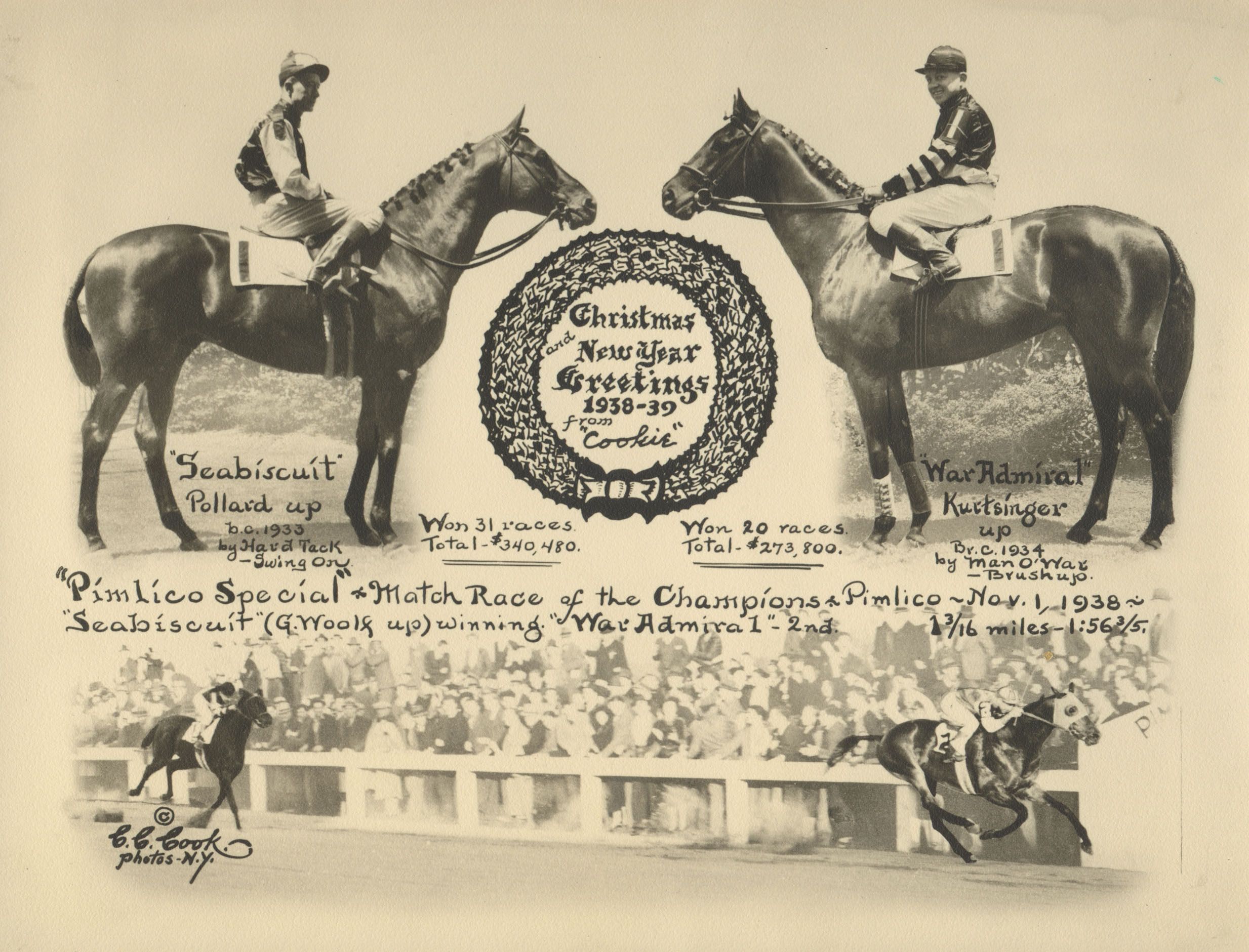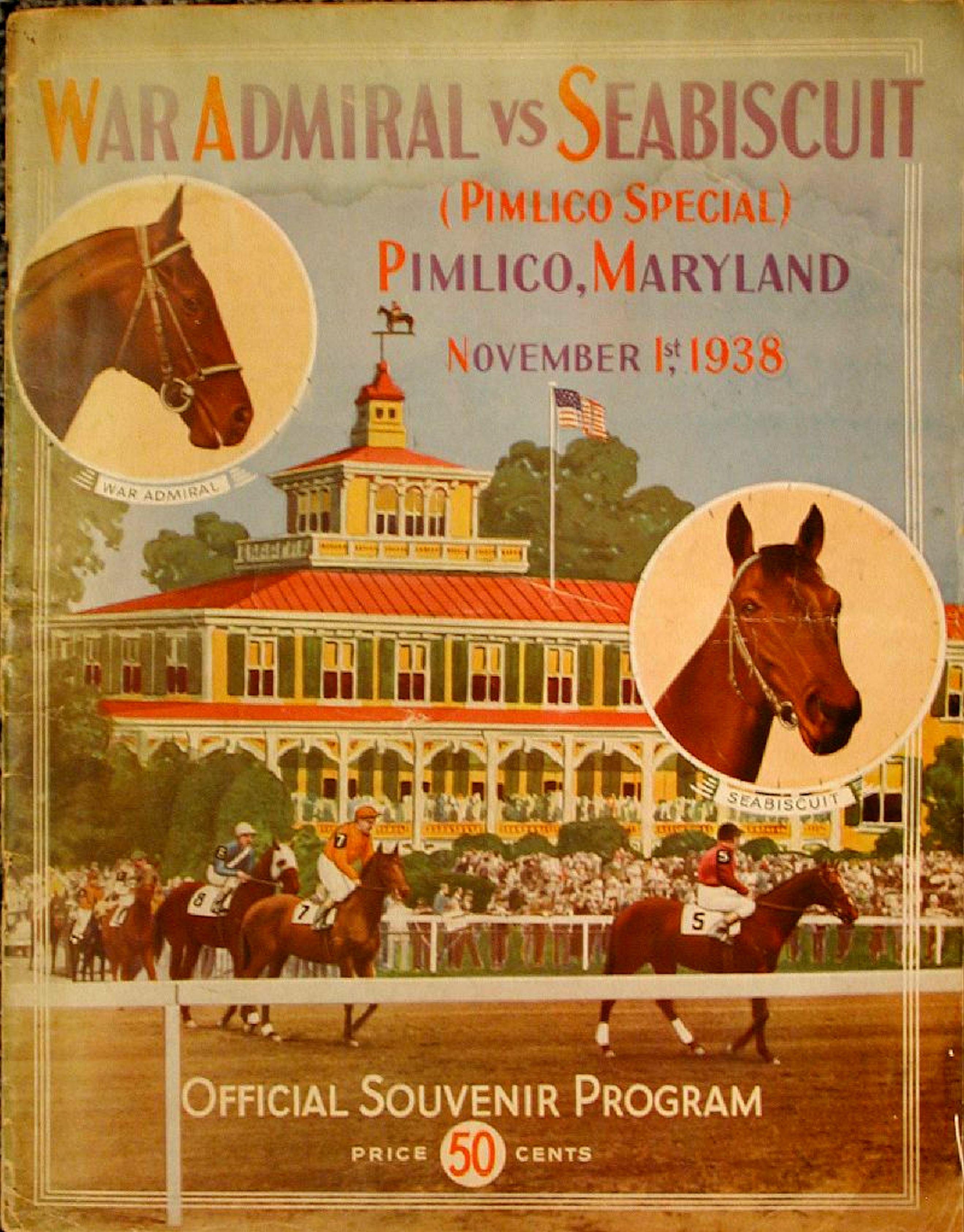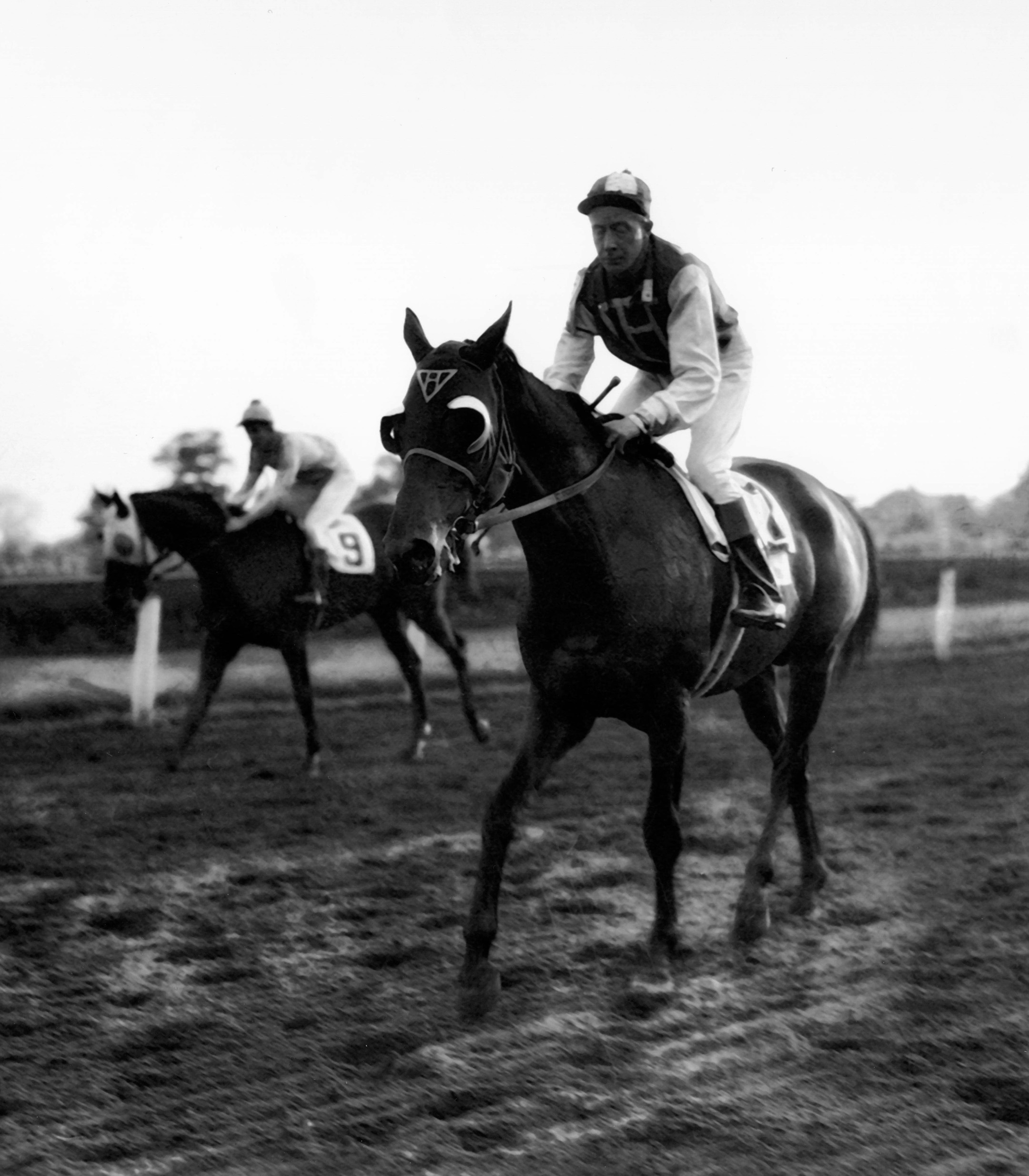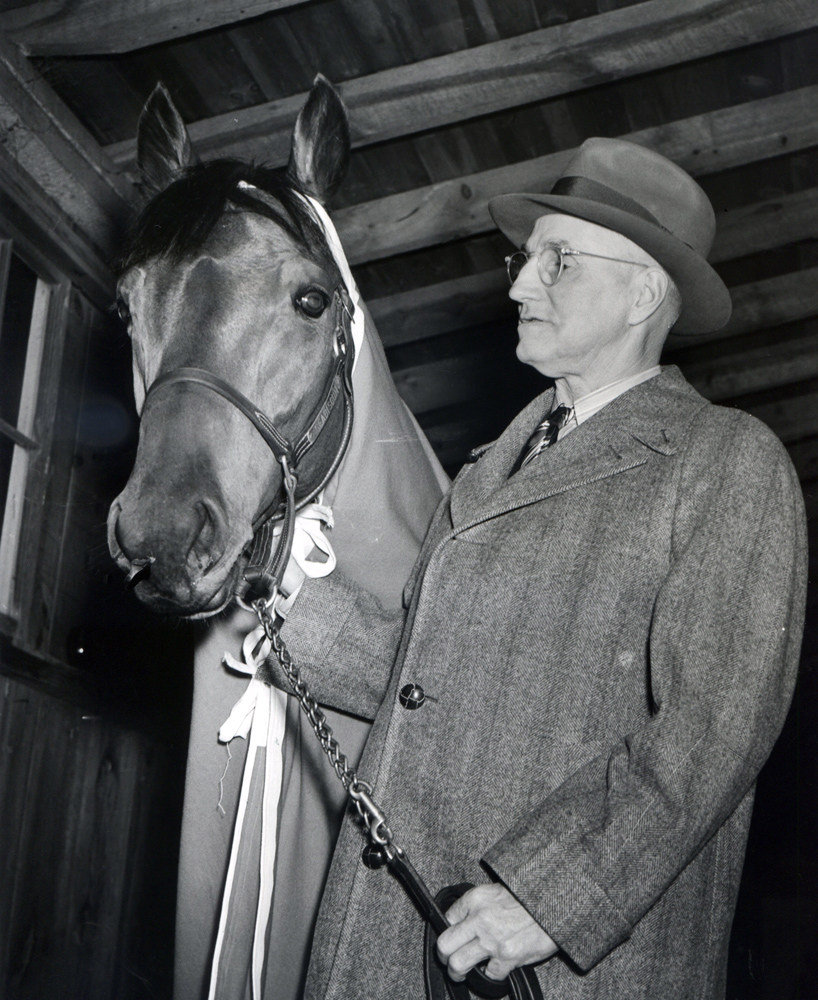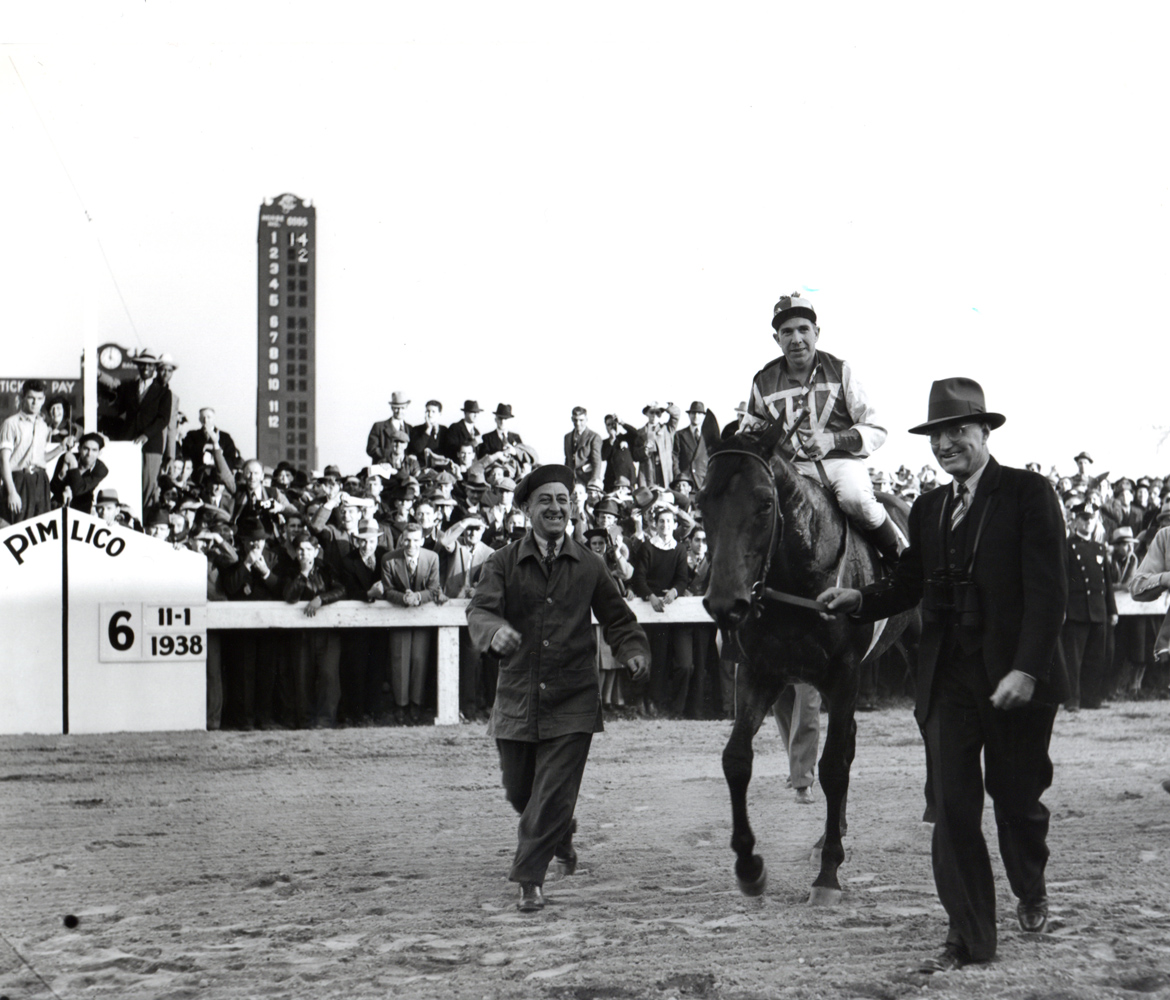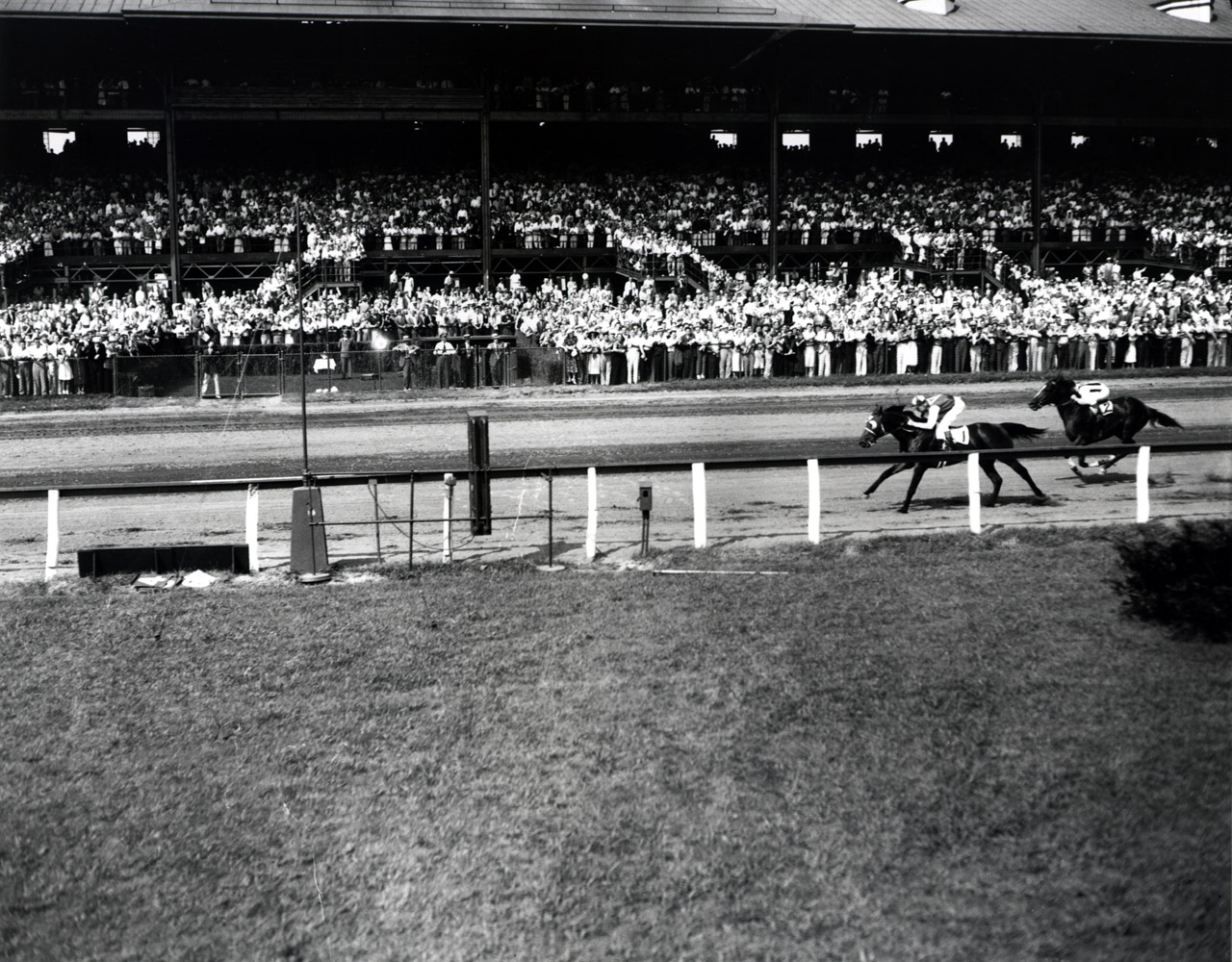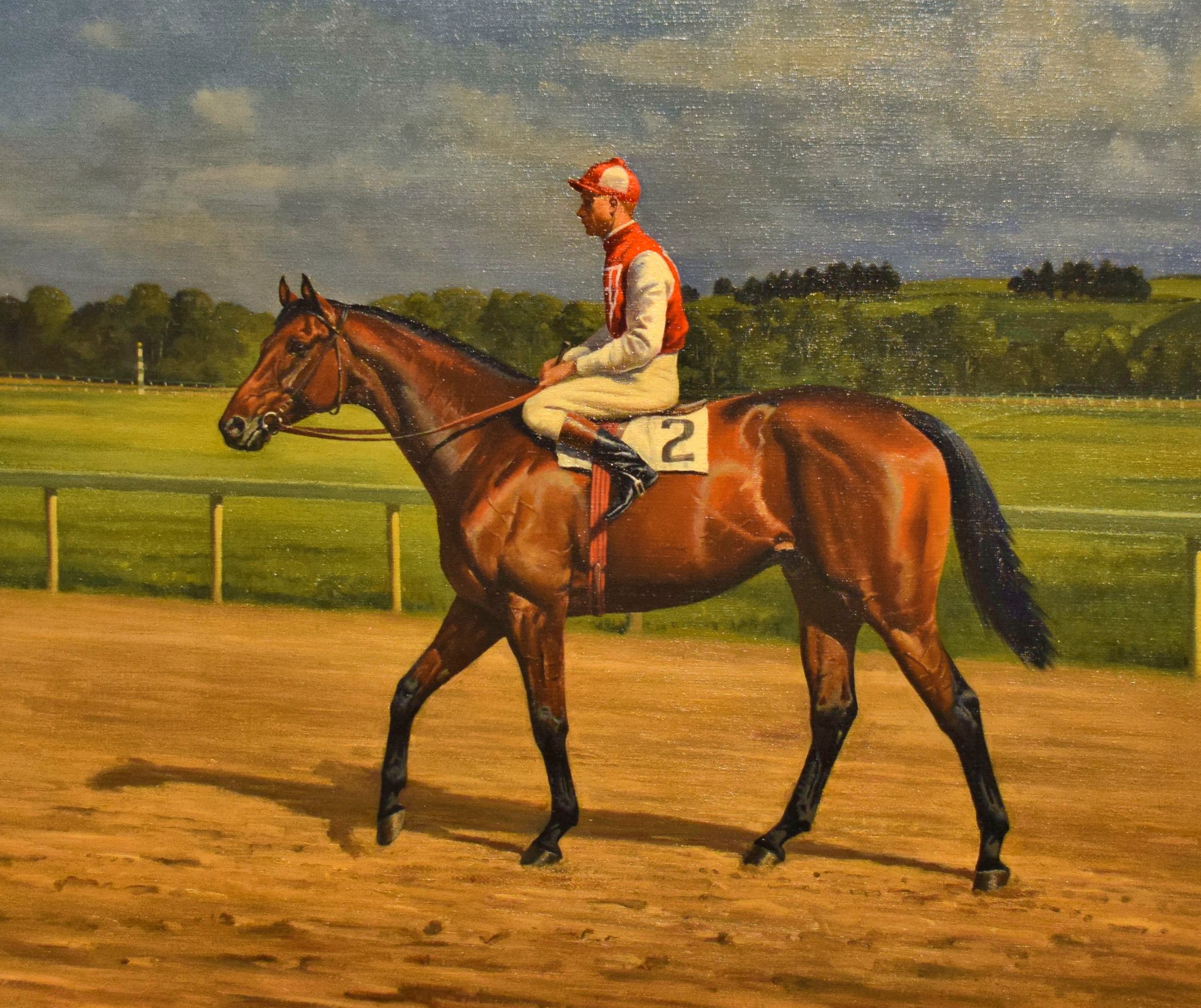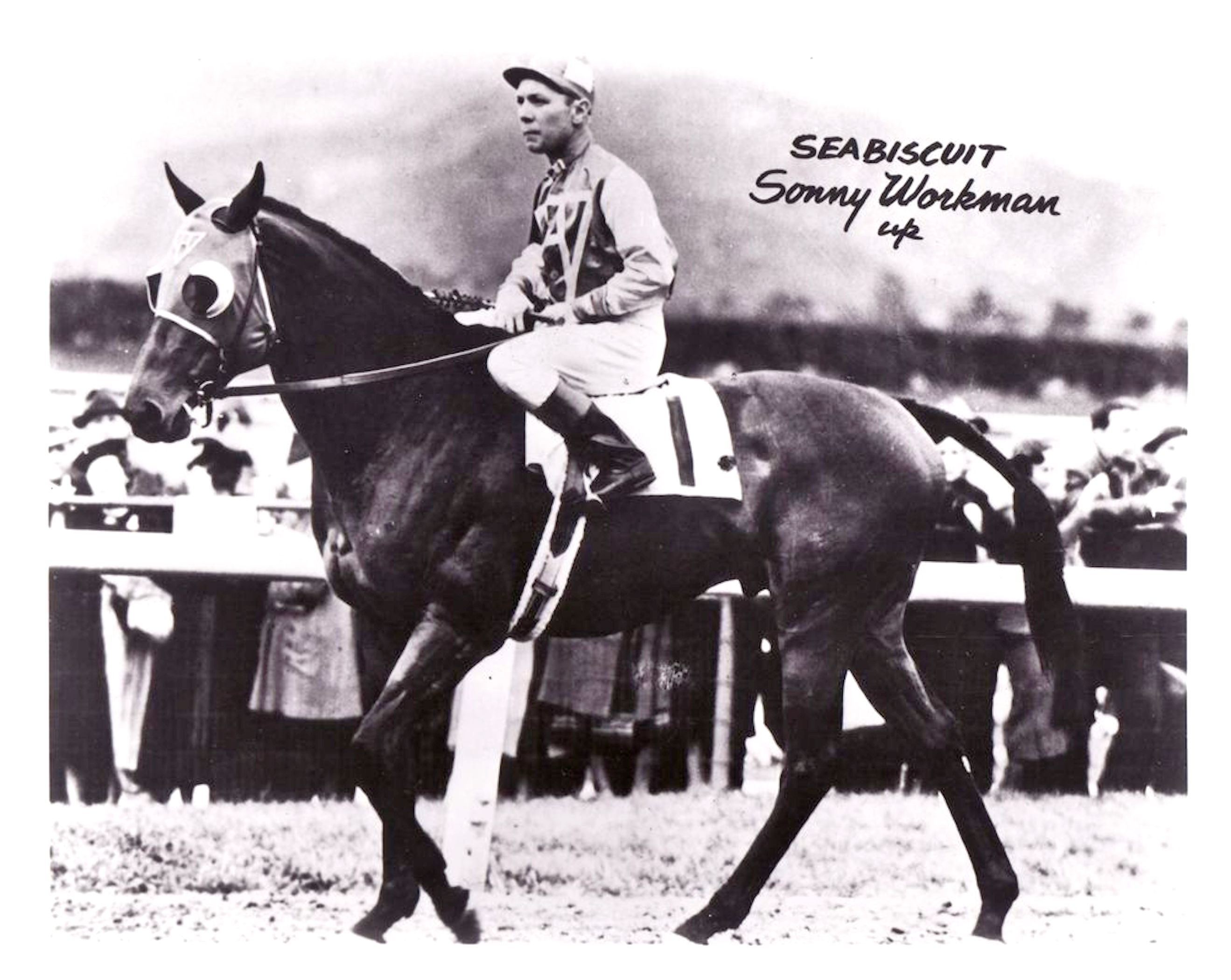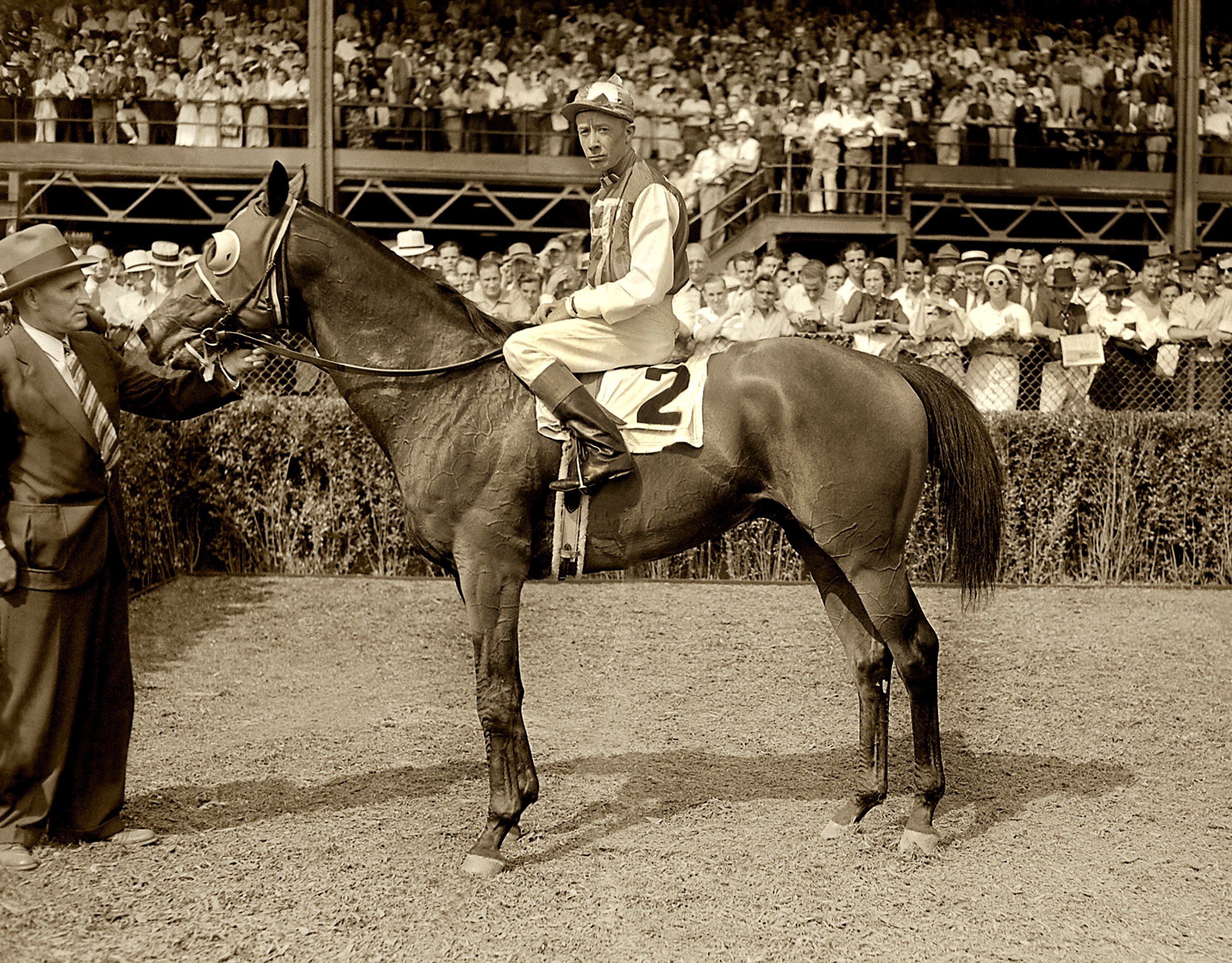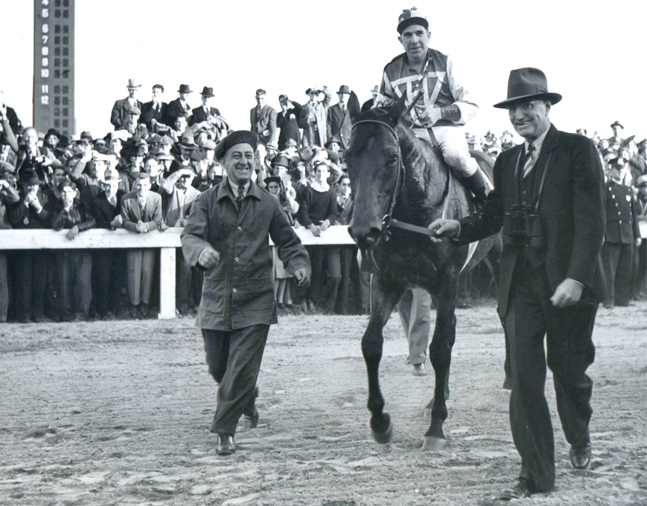Seabiscuit (KY)
In a true rags-to-riches story, Seabiscuit began his career with 17 consecutive losses before becoming one of the most successful and beloved horses in racing history, as well as a symbol of hope to many downtrodden Americans during the Great Depression.
Racing Record
89
Starts
| 1935 | 35 | 5 | 7 | 5 | $12510 $12,510 |
| 1936 | 23 | 9 | 1 | 5 | $28995 $28,995 |
| 1937 | 15 | 11 | 2 | 1 | $168580 $168,580 |
| 1938 | 11 | 6 | 4 | 1 | $130395 $130,395 |
| 1939 | 1 | 0 | 1 | 0 | $400 $400 |
| 1940 | 4 | 2 | 0 | 1 | $96850 $96,850 |
Biography
In a true rags-to-riches story, Seabiscuit began his career with 17 consecutive losses before becoming one of the most successful and beloved horses in racing history, as well as a symbol of hope to many downtrodden Americans during the Great Depression.
A son of Hard Tack out of the Whisk Broom II mare Swing On, Seabiscuit was raised at historic Claiborne Farm in Kentucky and little was thought of him early in his career. Bred and owned initially by the Wheatley Stable of Gladys Mills Phipps and her brother, Ogden Phipps, Seabiscuit had three different trainers in his 2-year-old season, including Hall of Famer James “Sunny Jim” Fitzsimmons.
Seabiscuit won his first race on June 26, 1935, at Narragansett in a $5,000 claiming event. He raced 35 times as a juvenile, including several weeks in which he competed multiple times. Seabiscuit continued to struggle against nondescript competition well into his 3-year-old season in 1936. That summer, trainer Tom Smith saw something he liked in Seabiscuit and convinced owner Charles S. Howard, a California-based automobile magnate, to purchase the colt after he won consecutive races at Saratoga.
With Smith, Howard, and new regular rider Johnny “Red” Pollard, things began to fall into place. Seabiscuit began to improve, winning the Governor’s Handicap, Hendrie Handicap, Scarsdale Handicap, Bay Bridge Handicap (setting a track record), and World’s Fair Handicap (another track record) by the end of 1936. They weren’t considered major victories, but it was clear the horse was improving, which convinced Smith to target bigger prizes.
After winning his first start as a 4-year-old in 1937, Seabiscuit was off the board in the San Antonio Handicap before coming up a nose short to Rosemont in the Santa Anita Handicap. Seven consecutive victories followed for Seabiscuit and a star was born. In succession, he won the San Juan Capistrano (by seven lengths in track-record time), Marchbank, Bay Meadows, Brooklyn, Butler (track record), Yonkers, and Massachusetts (track record) handicaps. After the streak was snapped in the Narragansett Special, Seabiscuit won the Continental Handicap, finished in a dead heat for first with Heelfly in the Laurel Stakes, and won the Riggs Handicap (track record). He finished his 4-year-old season with a record of 11-2-1 from 15 starts and earnings of $168,580.
In 1938, Seabiscuit won the Agua Caliente Handicap, Bay Meadows Handicap (track record), Hollywood Gold Cup, a match race vs. Ligaroti, and the Havre de Grace Handicap through September. As he continued to make headlines and garner the adoration of the American public, discussion of a match race against 1937 Triple Crown winner War Admiral reached a fever pitch. After long negotiations between Howard and Samuel Riddle, the owner of War Admiral, a showdown was set for Nov. 1, 1938, at Pimlico Race Course.
With Pollard out with a broken leg, Hall of Famer George Woolf became Seabiscuit’s regular rider for 1938 and was in the irons for the Pimlico Special vs. War Admiral. An estimated 40,000 were in attendance at the track and more than 40 million listened to the call on radio. War Admiral was heavily favored, but Woolf and Smith prepared Seabiscuit to break quickly — a much different tactic from his usual stalking style — and it led to a surprising early lead.
War Admiral started to close the gap, gradually pulling level with Seabiscuit, then slightly ahead. Following advice he had received from Pollard, Woolf had eased up on Seabiscuit, allowing his horse to see his rival, then asked for more effort. About 200 yards from the finish, Seabiscuit pulled away again and continued to extend his lead, finally winning by four lengths in track-record time in one of the most significant races of the 20th century. Seabiscuit was named Horse of the Year.
Returning to the races as a 6-year-old in 1939, Seabiscuit was injured during his lone start of the year and it was assumed he would be retired. Howard even bred Seabiscuit to seven mares in the spring of 1939. The great Seabiscuit, however, again defied the odds.
After slowly working his way back to races — and being reunited with Pollard, who had recovered sufficiently from his shattered leg — Seabiscuit won the San Antonio Handicap in 1940 (in track-record time) and closed out his career with a sensational victory in the Santa Anita Handicap, the race he lost by a nose three years earlier. Before a crowd of 78,000, Seabiscuit overcame early trouble and rocketed along the rail in the stretch to defeat stablemate Kayak II by 1½ lengths, covering the 1¼ miles in 2:01⅕, his final track record. There was nothing more to prove and Seabiscuit was retired as a genuine American hero. His final career record was 33-15-13 from 89 starts with record earnings of $437,730.
Retired to Ridgewood Ranch in California, Seabiscuit sired 108 foals, but few had any success on the track. His best offspring included Sea Swallow, winner of the Yankee Handicap, Tijuana Derby, and Derby Trial, and Sea Swallow, winner of the Santa Catalina Handicap.
Seabiscuit died of a heart attack at the age of 14 on May 17, 1947.
Achievements
Champion Older Male — 1937
Horse of the Year — 1938
Champion Older Male — 1938
Media
